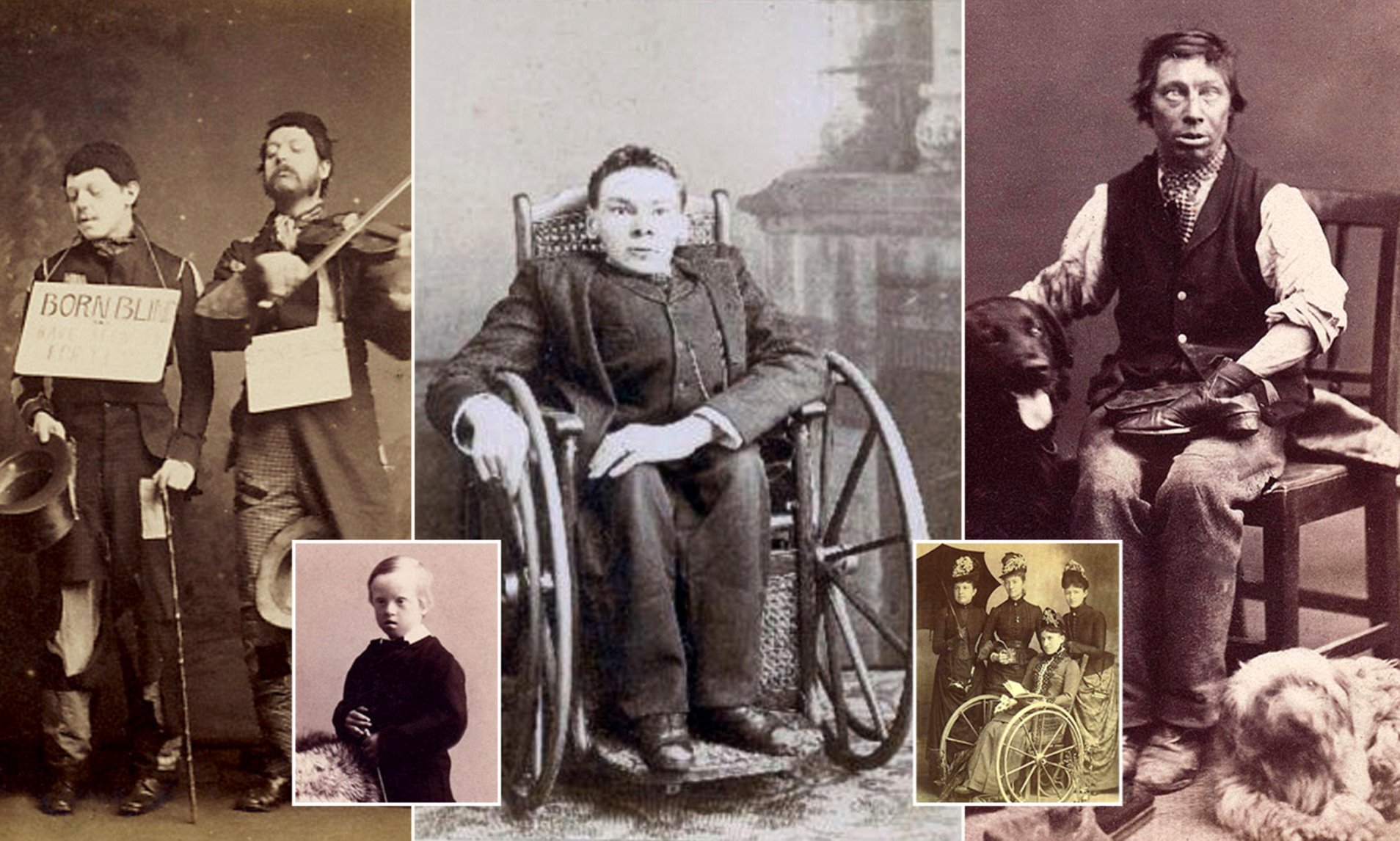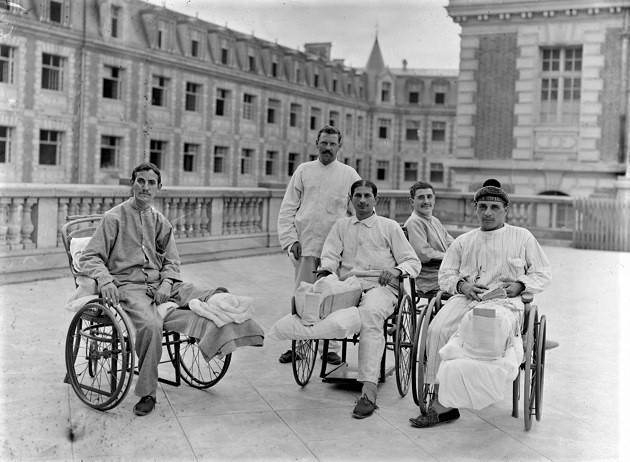Disability - A Brief Historical Overview
Throughout history, the pursuit of equity and access for individuals with disabilities has not been easy. However, the resilience and determination of the disability community and their allies have shaped significant milestones and legislative changes for disability rights and advancement of disability technologies. This article’s purpose is to provide a brief history of the advancement of disability rights and technologies.
Prehistoric and Ancient Times
Evidence from archaeological findings suggests that people lived with disabilities in prehistoric times. These findings suggest that family members or other mates would care for these individuals in some cases.
In ancient times, attitude and practice towards those with disabilities varied quite widely. In Ancient Greece and Rome, as well as many early Christian and African societies, infanticide was popularized for both eugenic and religious reasons. Philosophers such as Plato and Aristotle believed children with disabilities would burden resources. Adults with disabilities would often end up as low-level workers, beggars, or court jesters. Other societies, such as Ancient Egypt, were much more accepting and open-minded towards disabled individuals.
Middle Ages and Renaissance Period
As society progressed into the Middle Ages, so did attitudes and practices regarding disability. While, particularly through the Middle Ages, disabled individuals still struggled with oppression, practices did improve. Children were largely no longer abandoned, and many disabled people were working members of society.
As the Renaissance Period rolled around, attitudes began to shift in a more positive direction. Those with mental illnesses began to be viewed more commonly as sick or ill, rather than possessed. The first mental hospitals began to open, though at the time they were largely ineffective in treating disabilities. However, these institutions signaled a change in attitude, and began to study disability symptoms and causes. At the same time, blind and deaf people began to receive training and care they hadn’t previously.
18th and 19th Centuries (Enlightenment)
 Open the image full screen.
Open the image full screen.During the Enlightenment period, which spanned from the late 17th to the early 18th century, there was a significant shift in the perception of disability. The Enlightenment's emphasis on reason, human rights, and individual autonomy prompted a change in how disability was perceived. Enlightenment thinkers, such as Jean-Jacques Rousseau and Immanuel Kant, began to advocate for the dignity and inherent worth of all human beings, no matter their physical or intellectual differences. This newfound recognition of universal human rights in the potential for individuals to contribute to society led to a more inclusive approach towards people with disabilities, ultimately laying the foundation for future movements advocating for equal rights and social integration of disabled individuals.
The Industrial Revolution of the 19th Century brought about much more complex change for disability. On one hand, rapid industrialization brought about new opportunities for some individuals with disabilities, as mechanized work environments required a diverse range of skills. However, it also presented challenges, as harsh working conditions and overcrowded urban areas often exacerbated disabilities, and the workforce demand for efficiency sometimes created discriminatory practices against those who couldn't meet the physically demanding requirements. The period marked a mixed bag for people with disabilities, with both positive and negative implications, and set the stage for ongoing debates about the inclusion and accommodation of disabled individuals in an evolving industrial society.
20th Century
The 20th century saw more development with regards to disability. Like previous centuries, the changes were complex, with some positive developments and some negative.
 Open the image full screen.
Open the image full screen.The World Wars had significant impacts on disability in terms of the number of disabled individuals, infrastructure to support these individuals, and society’s perception of those people. The large number of people rendered disabled after combat led to increased awareness for the needs and rights of disabled individuals, and changed attitudes towards these groups. The Wars led to the creation and expansion of rehabilitation services for those with physical and mental disabilities.
In 1973, Section 504 of the Rehabilitation Act was passed, prohibiting discrimination on the basis of disability in any program or activity receiving federal funding. This was a very important step in paving the way for future disability law.
Alongside legal and conceptual changes, the 20th century saw significant advances in medical and assistive technologies. Major advancements were seen in prosthetic limbs, hearing aids, wheelchairs, braille technology, and mobility aids such as crutches and canes.
Late 20th Century, Early 21st Century
The late 1900s and early 2000s witnessed significant advancements in disability rights, reflecting a growing global awareness of the importance of inclusivity and equal opportunities for individuals with disabilities. One of the most significant pieces of disability legislation, the American with Disabilities Act, or ADA, passed in 1990. The ADA prohibits discrimination on the basis of disability in employment, public services, public accommodations, and telecommunications. This law ensures that those with disabilities have equal rights and opportunities. This act is one of the most comprehensive disability rights laws in the world, and has had a profound impact on accessibility and inclusion in the United States.
 Open the image full screen.
Open the image full screen.8 years later, in 1998, the Rehabilitation Act was amended with Section 508, which stated that agencies must give disabled employees and members of the public access to information that is comparable to access available to others. This ensured that rights given to disabled people under the ADA extended into the digital space, and has led to the modern-day Web Content Accessibility Guidelines, or WCAG.
In 2006, the United Nations published the Convention of the Rights of Persons with Disabilities (CRPD). It adopts a broad categorization of persons with disabilities and reaffirms that all persons with all types of disabilities must enjoy all human rights and fundamental freedoms. It was the first comprehensive human rights treaty of the 21st century and the first human rights convention to be open for signature by regional integration organizations. As of this article’s publishing, 191 nations have adopted this convention.
With the advent of this legislation, the concept of universal design exploded during this period. This concept emphasized the creation of products, environments, and services that are accessible to all, regardless of what abilities they have. This led to innovations in accessible technology, transportation, and public spaces.
In 2008, the Americans with Disabilities Act was expanded, with the definition of ‘disability’ being expanded to include more people. It also expanded the situations, organizations, and people to which the Act applies.
Further advances in assistive technologies occurred during this time. These advances further enhanced the independence of people with disabilities. The independent living movement gained momentum, emphasizing the rights of people with disabilities to live independently and make choices about their lives. Centers for Independent Living and personal assistance services played a crucial role in supporting independent living.
Overall, the changes made in the late 20th century laid the foundation for many modern initiatives and changes in regards to disability.
Modern Day
The 21st century has witnessed significant advancements in technology, medicine, and societal attitudes toward disability, leading to improvements in the lives of disabled individuals across the globe. Many global efforts and initiatives for disability have begun, including the CSU system’s Accessible Technology Initiative, the United Nations’ Sustainable Development Goals, DEAI (Diversity, Equity, Accessibility, and Inclusion) Frameworks, and many more. Programs such as these have helped further shift attitudes and perceptions towards disability to the future, and provide accommodations to those who may have otherwise not received it.
Digital Accessibility has also seen huge leaps forward this century. In 1999, the World Wide Web Consortium (W3C) began publishing Web Content Accessibility Guidelines, commonly referred to as WCAG. These guidelines provide standards for ensuring accessibility of Web content.
 Open the image full screen.
Open the image full screen.Advancements in technology for digital accessibility have also made strides. Screen readers have continued to improve. Advancements in AI have led to improvements in both assistive software and hardware for disabled individuals. AI advancements have also helped in expediting the creation of accessible materials.
Advances in Virtual Reality (VR) technology and Augmented Reality (AR) technology have also advanced digital accessibility. Individuals with physical disabilities can utilize these technologies to learn and work in an environment that compensates for lack of mobility. Other advancements, such as mobile advancements and Internet of Things (IoT) have also assisted in the advancement of digital accessibility.
Overall, the 21st century has seen significant strides in technology, medicine, and societal attitudes toward disability have enhanced the lives of disabled individuals globally. Initiatives like the CSU system’s Accessible Technology Initiative, alongside advancements in digital accessibility through standards like WCAG and innovations various technologies have continued to transform accessibility and inclusion for disabled populations worldwide.

